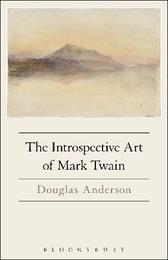
|
The Introspective Art of Mark Twain
Hardback
Main Details
Description
The Introspective Art of Mark Twain is a major new assessment of a towering American writer. Seeking to trace the development of Mark Twain's imagination, Douglas Anderson begins near the end of Twain's life, with the long dialogue What Is Man? that Twain published anonymously in 1906. In Twain's view, the little-read What Is Man? lies at the heart of his creative life. It is the central aesthetic testament that he employed to tell the story of his artistic evolution. Anderson follows the contours of that story as it unfolds over Twain's career. The portrait that emerges addresses the full scope of Twain's achievement, drawing on his autobiographical and travel writings, as well as the published and unpublished works of fiction that are by now deeply embedded in the world literary canon. "Steer by the river in your head," Mark Twain's master pilot, Horace Bixby, once advised him, when the opaque atmosphere of the outer world made it impossible to see the actual Mississippi through which Twain was trying to guide his steamboat. For the purposes of this book, the river in one's head is not a mental construct of the physical world but the riverine networks of consciousness itself: the river that is the mind. The detailed discussions of individual books that structure each chapter direct the attention of Mark Twain's students and admirers, through inward rather than outward channels, toward a fuller appreciation for his legacy.
Author Biography
Douglas Anderson is the Sterling-Goodman Professor of English at University of Georgia, USA. His previous books include A House Undivided: Domesticity and Community in American Literature (1990), The Radical Enlightenments of Benjamin Franklin (1997), William Bradford's Books: Of Plimmoth Plantation and the Printed Word (2003), Pictures of Ascent in the Fiction of Edgar Allan Poe (2009), and The Unfinished Life of Benjamin Franklin (2012).
ReviewsAnderson's study of the primary texts is thorough and wide-ranging, providing a sense of the intense mental spaces layered beneath so much of Twain's writing. The Introspective Art of Mark Twain will be of use to critics to understand the psychology of Twain and his creative process as it developed through his career. * American Literary Realism * Douglas Anderson's new book is the best we have on Mark Twain's lifelong interest in consciousness and the motions of the mind. With graceful, thorough attention to the historical record, Anderson situates him convincingly in the era of William James and the birth of modern psychology. More important, Anderson shows us new and deeper connections between this powerful interest, this fascination with the inner life, and Mark Twain's narrative strategies, from early sketches all the way to the final works. * Bruce Michelson, Professor Emeritus of American Literature and Campus Honors Program Director Emeritus, University of Illinois at Urbana-Champaign, USA, and author of Mark Twain on the Loose and Printer's Devil: Mark Twain and the American Publishing Revolution * This book offers a radical rereading and reassessment of a major American writer. Arguing that in Mark Twain's end is his beginning, Douglas Anderson shows how one of the writer's last books, published anonymously towards the end of his life, helps us to understand his artistic aims and achievement. Fresh light is shed on the familiar, as Anderson examines Twain's entire career with close reference to the idea that a writer often seen as a celebrant of the material, the outer world, was in fact preoccupied with the inner and, in particular with the tortuous, labyrinthine nature of the human consciousness. The Introspective Art of Mark Twain represents a major intervention in Twain studies and, in my opinion, is likely to become required reading for anyone interested in and working on this author. Energetically argued, intellectually sophisticated and deeply informed, it also performs the rare feat of shifting the critical paradigms and making us realise that there is much more to Mark Twain and his work than we had ever imagined. * Richard Gray, Emeritus Professor of Literature, University of Essex, UK * Placing Mark Twain's 'What Is Man?' at the beginning of his perceptive reading of the author's oeuvre, Professor Anderson makes the dialogue between Old Man and Young Man immediately compelling. The 1906 text becomes relevant to this twenty-first century. We appreciate again what Anderson calls Twain's 'argumentative play;' we see, perhaps for the first time, how important are the autobiographical excerpts in the North American Review. An accurate, erudite and above all sympathetic study. * Linda Wagner-Martin, Frank Borden Hanes Professor of English, University of North Carolina-Chapel Hill, USA *
|